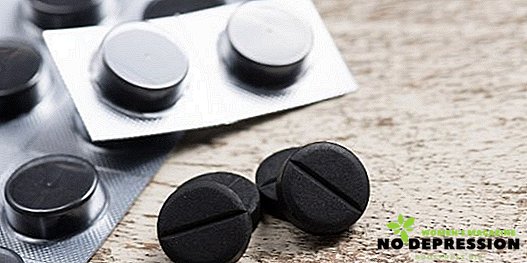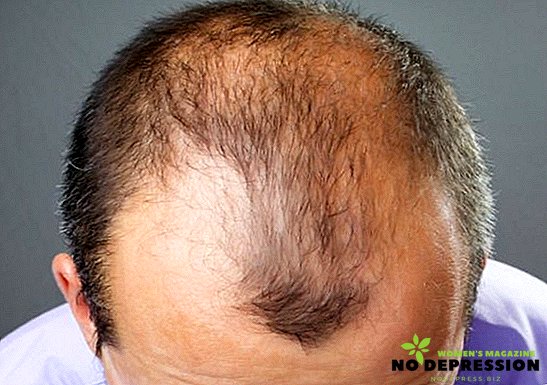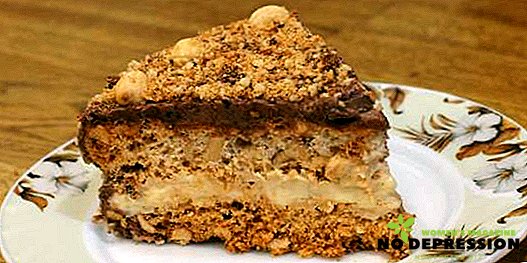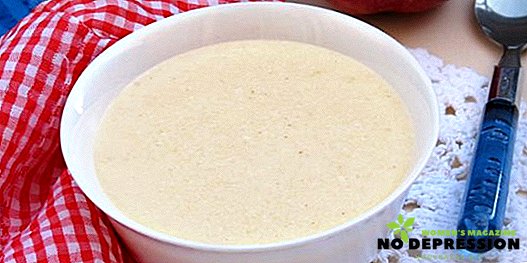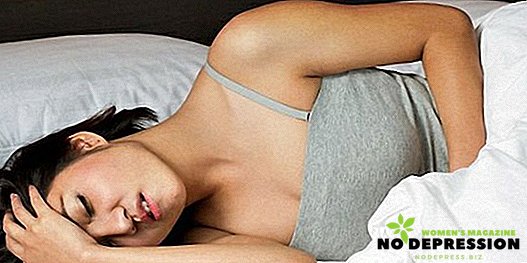It is considered a widespread disease that affects at any age. Serves as the source of most complications. It is a degenerative process of damage and deformity of the spinal column and transformation of the cervical vertebrae.

The disease is quite insidious for human well-being. Running osteochondrosis adversely affects the quality of life. Therefore, it is very important to be aware of the specifics of the disease and to know how to fight it.
Degree of development of the disease
Developmental disease has several degrees, which are characterized by certain symptoms.
1 degree
At the initial stage of the disease there is a slight lumen of neck lord, when pain is felt when turning and tilting the head, there is tension and weakness of the muscles in the lumbar region and back. At the preclinical stage, the ailment is treated non-drug, it is enough to balance nutrition, engage in fitness and lead an active lifestyle.
2 degree
It is characterized by instability between the vertebrae. Pain characterized by greater intensity, periodically give in the shoulder or arm. When the patient turns or bows his head, pain is felt due to the infringement of the nerves as a result of a decrease in the height of the intervertebral discs.  Distinctive features of this stage are:
Distinctive features of this stage are:
- quick fatigue;
- headaches;
- inattention;
- lowering the level of disability.
3 degree
There is an increase in pain, which constantly arise both in the neck and shoulders, giving in hands. For arm muscles, weakness, numbness are typical. Herniated intervertebral discs are formed. Diagnose poor mobility of the cervical spine. Weakness and dizziness cause concern to patients.
4 degree
The final stage is distinguished by the destruction of intervertebral discs and their replacement by connective tissue. Pathology covers several parts of the pillar, prone to destruction. Patients are characterized by poor coordination of movements, increased dizziness and pain symptoms, and the appearance of tinnitus.
Causes
The factors leading to the appearance of osteochondrosis include:
- overweight and unbalanced nutrition;
- poor posture, scoliosis, flat feet;
- rheumatism;
- hypodynamia;
- previous injuries of the spine and neck;
- excessive physical activity, unusual for the body;
- nervous tension, stress;
- genetic predisposition to the disease;
- defects in the formation of the cervical spine.

Many causes stress the cervical spine causing muscle spasm. As a result, the blood flow is disturbed, the productivity of metabolic processes is weakened, and degenerative modifications appear. The intervertebral discs are deformed: they become thinner and protrude beyond the boundaries of the spine.
Sometimes progressive discosis stimulates the appearance of osteochondrosis, which spreads to adjacent vertebrae or bone tissue. Appears in the cervical and lumbar regions with prolonged physical exertion.
Symptoms of osteochondrosis of the cervical spine
The following symptoms are observed:
- Pain is localized in the back of the head and neck, shoulder, upper and lower extremities. Feeling uncomfortable in the back of the head and shoulders. Disturbed blood circulation due to spasm of the neck muscles in the back of the head.
- Weakness and numbness of the hands, which is caused by a defect in the functioning of the spine, which affects the motor nerves.
- Sensation of pain when moving the head, audible crunch. It is a consequence of the pathology of the small cervical joints of the neck, a decrease in the height of the intervertebral disk.
- Powerlessness, dizziness, lethargy, impaired coordination of movements. Due to the displacement of the vertebrae, the artery of the vertebral column is compressed. Blood circulation, blood supply to the cerebellum, occipital lobe worsens.
- Vision problems, loss of sensation of the tongue.
- Predisposition to hypertension.
Headaches with osteochondrosis
 Generated by inflammation and swelling of the roots of the spinal cord. The reason is the shift and deformation of the vertebrae that occur during injury to the intervertebral discs, their compression, destruction of the gelatinous core and its drying.
Generated by inflammation and swelling of the roots of the spinal cord. The reason is the shift and deformation of the vertebrae that occur during injury to the intervertebral discs, their compression, destruction of the gelatinous core and its drying.
Arise due to the difficulty of blood circulation through the vertebral artery: crushing of bone outgrowths and pinching of nerve endings. The decrease in the conduction of nerve impulses is responsible for the growth of intracranial pressure, the appearance of spasms in specific areas of the brain.
Cranialgia - headaches that are caused by cervical osteochondrosis. Declare themselves by the suddenness of unexpected paroxysmal unreasonable pain. The duration of the attack reaches several hours, and sometimes takes two days.
At times, the pain is arching. When the eyeballs and head move, its amplification increases. Another variation is a sharp pain in the temples or the back of the head, which appears without any reason.
The duration of being in the same position responds with pain. Headache with a flash goes to the neck, shoulders, upper limbs, provokes numbness or tingling in these areas. In addition, finger motility and hand dynamics are reduced.
Headache is often accompanied by:
- increase in blood pressure;
- general tiredness;
- vomiting;
- sleep disorder;
- movement disorders;
- dizziness.
Osteochondrosis causes the development of cervical migraine due to compression of blood vessels and nerve tissue. Headache is similar to classic migraine in one part of the head.
Muscle spasm is reflected rapid pain in the head and neck and limits the activity of the latter. However, headaches are observed in the neck, temples or crown.
Difference from cold is in normal temperature.
Diagnostic features
The disease is diagnosed by symptomatology. In addition, for the diagnosis use different research methods:
- medical history;
- examination of the patient;
- X-ray data;
- MRI (magnetic resonance imaging);
- CT (computed tomography).
It is important to make an appointment with a neurologist or therapist.
How to treat a disease
Physiotherapy
Physiotherapy procedures are effective: they speed up recovery, they affect the body mainly positively.
Contraindications to their use:
- benign and malignant neoplasms;
- blood disorders;
- skin diseases in acute manifestations;
- taking drugs that enhance the effects of physiotherapy.
In this regard, the use of many techniques is considered effective.

Shock wave therapy with acoustic waves affects the affected area. Benefits:
- radically improves the local blood flow;
- reduces pain, inflammation, swelling;
- activates the production of collagen;
- increases metabolism.
Popular and widely used:
- laser treatment;
- magnetic therapy;
- ultrasound therapy;
- vibrotherapy;
- UFO;
- balneotherapy;
- electrotherapy;
- detenzor therapy.
UV exposure
Promotes the formation of vitamin D for calcium absorption. The technology is based on the use of irradiators with anesthetic, antiseptic and anti-inflammatory effects. Procedures are performed in the back of the neck and upper scapular region, subclavian area, on the outer shoulder surface.
Prior to treatment, be sure to test susceptibility to ultraviolet radiation. The first session begins with a small bio-dose, then gradually increases. As a rule, 10-15 sessions are prescribed.
Contraindications:
- oncology;
- drugs, the effect of which is enhanced by the action of ultraviolet.
- blood diseases.
Denzor therapy
The essence of the technology - stretching the spine under the weight of the patient's body.
Laser therapy
The neon-helium lasers on which the method is based have a wound healing, sanitizing, analgesic effect. During treatment, the paravertebral areas of the affected part are affected. The duration of action on the area (cerebrospinal root) is 2 minutes. The procedure takes about 14 minutes in total.
Magnetic therapy
Inductors are placed on the damaged spinal column and limb. In the treatment used a constant mode with magnetic induction from 28 to 35 mTl. Procedure time: about 20 minutes, the course can go up to 20 procedures.
Balneotherapy
Mineral waters (shower, swimming pool, local and common baths) and mud are given the main role in recovery and therapy. Mineral compounds penetrate through the epidermis and act on the nerve endings and centers. Pelotherapy has a positive effect due to the temperature and chemical composition of the mud. Used in the form of applications. It encourages metabolism, increases blood circulation and eliminates inflammation.
Electrotherapy
Based on the action of current and electric field. Advantages of current therapy:
- current circulation enhancement;
- pain relief;
- boost healing.
The method is contraindicated in patients with metal implants and pacemakers.
Preparations
 The adoption of certain groups of drugs involves the elimination of the symptoms of the disease, the improvement of cartilage nutrition, antioxidant defense.
The adoption of certain groups of drugs involves the elimination of the symptoms of the disease, the improvement of cartilage nutrition, antioxidant defense.
Only after the diagnosis, only the doctor determines and prescribes drug therapy.
Use groups of medications:
- Non-steroidal anti-inflammatory: Meloxicam, Diclofenac, Nimesulide, Ketorolac, Indamethacin. They fight pain and inflammation, they reduce proliferation. Taken in pills, but during the period of exacerbation, you can enter intramuscularly. The duration of use in maximum doses of more than a week can cause toxic liver damage and the appearance of gastric ulcers.
- Chondroprotectors are used when diagnosed. Their effectiveness is influenced by the duration of the reception. First of all, this refers to tablets and capsules for internal use. Assign inside Terafleks, Artrum, Struktum. Part of the glucosamine has an impact on metabolic processes in cartilage fibers, and chondroitin prevents the destruction of the disk. Medicines for injection Aflutop and Adgelon, which are prescribed by the course, contribute to the restoration of connective tissue, increase the nutrition of the disks and metabolism. In the presence of natural chondroprotectors: dishes with gelatin - jelly, jellied meat.
- Vasodilators: Papaverine, Drotaverin - eliminate vascular spasm, normalize muscle blood circulation, remove inflammation.
- Diuretics, including furosemide, are used to exacerbate the symptoms of the disease. A short course of therapy ensures the removal of inflammatory swelling and nerve compression.
- Vitamins as antioxidant protectors contribute to the protection of cartilage tissue, affected nerves, brain cells. To improve the condition of peripheral nerves, B vitamins are required. The use of vitamin B12 and B6 alternate every other day. The adoption of a brief course of superdiagnosis of group B vitamins, for example, in the Neuromultivitis complex, has a productive effect.
- With exacerbation of the disease, Kapsik's ointment will help to eliminate the pain syndrome, produce a warming effect and improve blood flow. Rub in a small amount with a special massager on the affected area.
Exercises physical therapy
 Note the effectiveness of therapeutic gymnastics and safety during recovery.
Note the effectiveness of therapeutic gymnastics and safety during recovery.
Requirement - the absence of pain and discomfort in the patient when performing exercises.
Classes contribute to the strengthening of the neck muscles, will be a reliable means of preventing osteochondrosis.
The doctor selects a set of exercises based on the state of the body.
For each patient, their own complex, taking into account the period of the disease, the area of spinal lesions, complications and secondary pathologies.
- Choose comfortable clothes made from natural materials, which does not interfere with movements and does not violate the heat exchange.
- Perform exercises on the floor. It is advisable to purchase a gym mat.
- For classes suitable well-ventilated room with artificial or natural ventilation.
- A phased increase in physical activity.
- Control pulse and respiration. When performing exercises, the pulse normally ranges from 89 to 129 beats per minute. Be sure to breathe evenly. The appearance of dyspnea is a sign to stop training and take up breathing exercises.
- The appearance of pain in the heart - the reason for the visit to the doctor.
- If the pains in the cervical region are intensified and appear during dynamic exercises, the tempo of movements is slowed down or replaced by static exercises (for example, stretching and relaxation of muscles).
- The back is straight during class.
- The regularity of the exercise.
- Circular head movements are prohibited.
- Smoothness and slowness of the exercises.
| Exercise number 1 | Put your head down and try to reach your chest with your chin. Gently pull the neck muscles, gently lift up the head and lay back, keeping the tension for long. Repeat 10 times. |
|---|---|
| Exercise number 2 | Lying on your stomach, stretch your arms along your torso, turn your head to the left, trying to touch the floor with your ear, then repeat, turning your head to the right. Do at least 6 approaches. |
| Exercise number 3 | Raise up the shoulders, clench your hands into fists, then lower the shoulders, and unclasp your hands. Exercise repeat 7-8 times. |
| Exercise number 4 | Press on the forehead with the palms, and with the forehead resist the pressure. Run 30 seconds. After doing the exercise, pressing on the back of the head with linked hands. Repeat 2-3 times. |
| Exercise number 5 | Slow rotational head movements to the sides. Produce 10 times right and left. The appearance of vertigo is a signal for the immediate cessation of exercise. |
Massage for osteochondrosis of the cervical
It is required to strengthen muscle tone and relieve pain. Massage technique depends on the stage of osteochondrosis. However, during a neck massage, classical techniques are used. If there is one-sided pain, the procedure begins with a healthy neck area with a gradual movement into the collar zone, in which pain is felt.
It is possible to perform a massage at home with caution. The patient takes a prone position, put his forehead on the hands, pull his chin to his chest. For the muscles of the neck is characterized by relaxation.
| Stroking | The procedure begins with stroking the collar area. Next - on the movement from the lymph to the nodes above the collarbone and armpits. Then turn flat and comb-like strokes. |
|---|---|
| Squeezing | To perform push-ups, the hand of the masseur is positioned across the neck (fingers, index and big, are together) and moves down the spinal column. Movements are made by the edge of the palm to the shoulder joints. |
| Trituration | Used to warm up muscles, relax and improve blood circulation in this area. Begin the procedure from the base of the skull, making circular and straight movements with your fingers. Sawing movements are made by placing palms on the ribs in parallel. |
| Kneading | On the neck doing kneading circular movements. |
| Vibration | Massage is completed by strokes and vibration, by tapping. |
Preventive measures
To prevent the onset and development of the disease, doctors advise you to follow simple requirements:
- playing sports and physical culture (swimming is very useful);
- the inclusion in the menu of foods that are rich in magnesium and calcium (seafood, peas and beans, seeds and nuts, dairy products, spinach and greens);
- Exclusion from the diet of hot peppers and spices, grapes, sugar and salt, baking, smoked meats;
- during sedentary workout, warm-up and exercise are required several times daily;
- selection of a comfortable mattress and pillow.
Diet
Limits the consumption of salty and spicy foods and foods, as well as tea and strong coffee. Prohibited carbonated drinks, sweet and flour, mayonnaise, canned food. Food is harmful to health.
Include healthy and wholesome foods on the daily menu. Eat more foods containing: calcium (dairy products); phosphorus (eggs, fish); copper, iron (liver, nuts, seeds, meat); vitamins A, B, C (greens, whole grains, fruits, vegetables).
Following the recommendations will protect against osteochondrosis.
Cure the disease can be without resorting to surgery. But this is a complex process and solve it in a complex, using drugs, physiotherapy, exercise therapy and massage.




